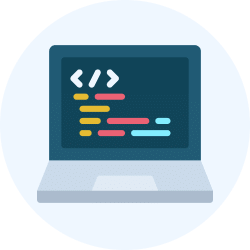Computer Science Engineering (CSE) Exam > Computer Science Engineering (CSE) Videos > Embedded Systems (Web) > Real Time Operating System (RTOS): Basic Concepts
Real Time Operating System (RTOS): Basic Concepts Video Lecture | Embedded Systems (Web) - Computer Science Engineering (CSE)
FAQs on Real Time Operating System (RTOS): Basic Concepts Video Lecture - Embedded Systems (Web) - Computer Science Engineering (CSE)
| 1. What is a Real Time Operating System (RTOS)? |  |
Ans. A Real Time Operating System (RTOS) is an operating system specifically designed for real-time applications, where tasks need to be completed within strict timing constraints. It provides deterministic and predictable behavior, ensuring that critical tasks are executed in a timely manner.
| 2. What are the key features of a Real Time Operating System (RTOS)? |  |
Ans. The key features of a Real Time Operating System (RTOS) include task scheduling, interrupt handling, task synchronization and communication, memory management, and support for real-time constraints. These features enable efficient and reliable execution of real-time applications.
| 3. How does a Real Time Operating System (RTOS) handle task scheduling? |  |
Ans. A Real Time Operating System (RTOS) uses various scheduling algorithms, such as priority-based scheduling or round-robin scheduling, to manage the execution of tasks. The scheduler determines the order and timing of task execution based on their priorities or predefined rules, ensuring that higher priority tasks are given precedence.
| 4. What is the significance of task synchronization and communication in a Real Time Operating System (RTOS)? |  |
Ans. Task synchronization and communication mechanisms in a Real Time Operating System (RTOS) enable tasks to coordinate their activities and exchange data. These mechanisms, such as semaphores, mutexes, and message queues, ensure that tasks can safely access shared resources and communicate with each other without conflicts or data corruption.
| 5. Can a Real Time Operating System (RTOS) guarantee real-time constraints in all situations? |  |
Ans. While a Real Time Operating System (RTOS) provides mechanisms to prioritize and schedule tasks, it cannot guarantee real-time constraints in all situations. Factors such as system load, hardware limitations, and software complexity can affect the ability of an RTOS to meet strict timing requirements. Careful system design and analysis are necessary to ensure that the RTOS can handle the expected workload and meet the desired real-time performance.
Related Searches















